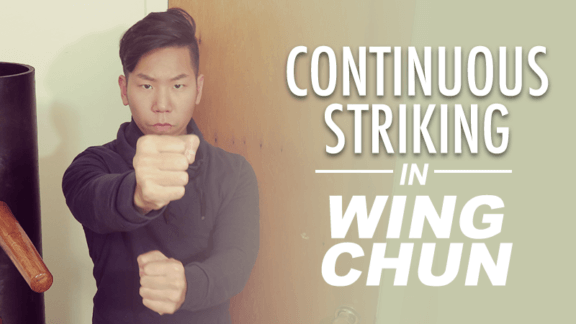Let’s Talk About Sensitivity
Let’s talk about sensitivity and having control over your intentions.

In Wing Chun, I think we’re trained for sensitivity so we know when to react. I feel like this is a double edged sword because we’re trained to react when we feel our opponent’s intent but what if the person doesn’t show intent? It makes it harder to react.
The idea of intent is focusing on a particular point. The idea of controlling my intent is trying to achieve the same results but without intent. I know, this sounds confusing so let’s use an example. I want to block a strike coming towards me with a Jum Sau. My intent is laser focused on the point of contact where my Jum Sau stops the strike. Instead of blocking with intent, I can choose to simply occupy the space where the strike needs to go through. So the ultimate goal isn’t to block the strike but to prevent it from reaching me.
What’s the point of controlling my intentions? Well if you give intent, I can react to it by preparing myself and keeping my guard up. If I don’t feel intent, however, I’m less likely to defend because I’m not expecting anything.
Putting Our Wing Chun Reflexes Into Action
In Wing Chun, We train to step forward but what if I’m not at that level yet and my natural reaction is to be defensive and step back?
Our ultimate goal in Wing Chun is to intercept, step forward, and strike. But if we’re not there yet, and we react defensively and step back, what should we do?
Here are 3 things to keep in mind when you do step back.
- Keep your hands up in Wu Sau position. This is very important because you need to be ready to block.
- Don’t retreat directly backwards. Step to the side. If you’re still going backwards, step backwards at an angle so your opponent has to readjust their center.
- This is the hardest part, counter striking. Stop backing up, and counter. End your opponent’s momentum and counter strike.
In a controlled environment like a class, it’s easy to practice stepping forward. But our natural instinct may be to be defensive and not confrontational. If that’s the case, remember to keep your hands up in Wu Sau, retreat to the side or at an angle, and counter strike!
Keeping Contact and Control
I stick to my opponent to maintain contact but making contact doesn’t always mean sticking, and sticking doesn’t always mean control.
If my point of contact with my opponent is my wrist or my fingertips, there’s nothing I can do to follow my opponent because the area of contact from my wrist or fingers limits what I can control.
The palm, however, is a good part of the hand to use for sticking and following the opponent without being aggressive. It also offers enough surface to easily adapt to my opponent’s movements whether they want to move up, down, or side to side.
Let’s Talk About Speed
When I think of speed, I think about being faster than my opponent and whether I can move faster, defend faster, strike faster, or just react faster. The thing is, I can be faster than my current opponent but this will not always be true for everyone else. There will always be someone faster than me, stronger than me, and so on.
The speed I want to discuss today involves moving and striking before my opponent can react. I’ve been trained to be sensitive to intentions and I believe my reaction is very high and usually accurate. When I feel pressure or a strike coming, my body immediately lets me know something is on its way and I should get ready. The problem is, what if my opponent doesn’t give any intention or pressure? My mind isn’t used to it so I don’t react. I don’t guard up nor do I prepare myself because I don’t feel danger.
So this had me thinking. If I can get into my opponent’s space, without raising any alarms, and my opponent doesn’t react, then it’s an open invitation to strike. If my opponent doesn’t feel me coming, they won’t have time to react when I strike. In this instance, I am moving faster than my opponent’s reaction without actually being physically faster than them.
The Good, The Bad, The Muscle Memory
Let’s discuss the good and the bad of relying on muscle memory in Wing Chun.


